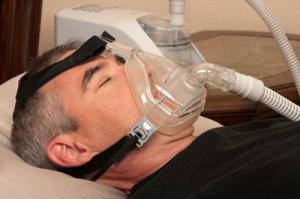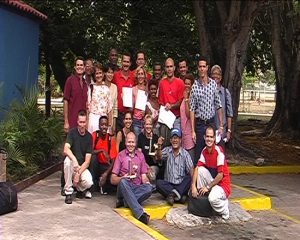
How does a tongue tie relate to your breathing?
For the best part of 50 years I breathed through my mouth almost exclusively. I had a deviated septum which, with hindsight, may have contributed to my mouth breathing. I unconsciously believed my nose was only useful for smelling.
According to Dr Raymond Silkman:
A deviated septum blocks proper nasal air flow causing the individual to take up mouth breathing most of the time. 1
It wasn’t until I was 48 years old that I first became aware of the possibility that I had sleep apnoea. Following my diagnosis of severe obstructive sleep apnoea (OSA) I tried a dental mouthguard with very limited success. I then used a CPAP machine with symptomatic success, persisting for two months before I could no longer tolerate it. I was then drawn to Buteyko Breathing as a natural method for controlling OSA.
Following my introduction to the Buteyko Breathing Method I achieved regular quality sleep from breathing less, with my diaphragm and only with my nose. However, I still found it a discernible effort at times to nasal breathe with my deviated septum. I later learned from an osteopath that I was heaving my chest and exhibiting tension in my scalene muscles2 as I inhaled through my nose prior to speaking.
I consulted an osteopath prior to undergoing a tongue tie release. Why did I make the decision to undergo a tongue tie release so late in my life?
I was 56 years old when an orofacial myofunctional therapist noticed my tongue tie as I spoke and swallowed.
I learned that nose breathers normally have three quarters of their tongue postured up into the maxilla (top jaw) pressing against the upper palate and behind the top front teeth. When in this position, it is maintaining the shape of the top jaw each time you swallow. It is also impossible for you to breathe through your mouth whilst your tongue is in this position. But it was impossible for me to adopt this position because of my tongue tie.
A clinical study at Stanford University, Sleep Medicine Division, USA led by Professor Christian Guilleminault, a leading sleep medicine specialist, was published online on 29 July 2016.
The study found that a tongue tie left untreated at birth has been shown to lead to mouth breathing and to abnormal development of the oral cavity, increasing the risk of upper airway collapsibility associated with obstructive sleep apnoea syndrome at a later age.3
The oral-facial malformation caused by a tongue tie decreases the size of upper airway support thereby increasing the risk of upper airway collapsibility during sleep.
A total of 150 children aged 3 to 12 years were referred to the researchers’ clinic from 1 January 2014 to 1 August 2015. All were suspected of having sleep disordered breathing and were split into 2 groups. The 1st group had a tongue tie and the 2nd group had no tongue tie.
Following completion of a sleep study the following was concluded:
When considering results of several of our investigations performed in children a pattern emerges: a dysfunction early in life involving abnormal nasal breathing, sucking and masticating leads to progressive dysmorphoses favouring increased collapsibility of the upper airway during sleep, which worsens with ageing and leads to the development of sleep disordered breathing over time up to adulthood.
After my tongue tie release and following the tongue strengthening exercises I experienced a significant lessening of the tension in my deviated septum, neck and upper body. There is no doubt that the release of the tongue tie has made diaphragmatic nasal breathing easier.
An interesting question arises from the study. Why does OSA associated with a tongue tie become worse with ageing? I suspect that as we age our muscles degenerate, are not as resilient and more susceptible to collapse through the wear and tear of mouth breathing through a narrower throat. These ageing effects only compound the effects of breathing more air at a quicker rate due to stress, poor posture and or an unhealthy diet.
This article contributed by Paul Rodriguez, a Buteyko Practitioner and Director of Learn To Sleep Well. He is also the author of ‘Breathless Sleep… no more’.
1 Is it Mental or is it Dental? Raymond Silkman, DDS 29 March 2006 Weston Price Foundation
2 Defined by the Advanced English Dictionary Version 11.0©2018 as any of four pairs of muscles extending from the cervical vertebrae to the second rib; involved in moving the neck and breathing
3 A frequent phenotype for paediatric sleep apnoea: short lingual frenulum by Christian Guilleminault, Shehlanoor Huseni & Lauren Lo, https://www.ncbi.nlm.nih.gov/pmc/articles/PMC5034598/






